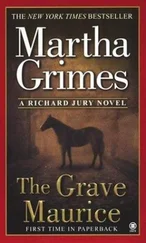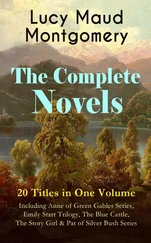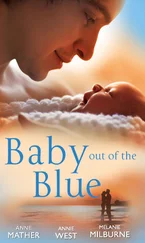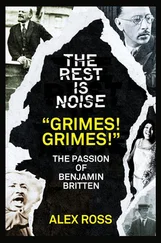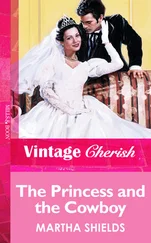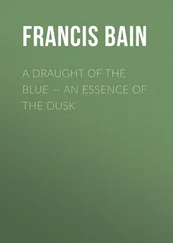Martha Grimes - The Blue Last
Здесь есть возможность читать онлайн «Martha Grimes - The Blue Last» весь текст электронной книги совершенно бесплатно (целиком полную версию без сокращений). В некоторых случаях можно слушать аудио, скачать через торрент в формате fb2 и присутствует краткое содержание. Жанр: Детектив, на английском языке. Описание произведения, (предисловие) а так же отзывы посетителей доступны на портале библиотеки ЛибКат.
- Название:The Blue Last
- Автор:
- Жанр:
- Год:неизвестен
- ISBN:нет данных
- Рейтинг книги:3 / 5. Голосов: 1
-
Избранное:Добавить в избранное
- Отзывы:
-
Ваша оценка:
- 60
- 1
- 2
- 3
- 4
- 5
The Blue Last: краткое содержание, описание и аннотация
Предлагаем к чтению аннотацию, описание, краткое содержание или предисловие (зависит от того, что написал сам автор книги «The Blue Last»). Если вы не нашли необходимую информацию о книге — напишите в комментариях, мы постараемся отыскать её.
The Blue Last — читать онлайн бесплатно полную книгу (весь текст) целиком
Ниже представлен текст книги, разбитый по страницам. Система сохранения места последней прочитанной страницы, позволяет с удобством читать онлайн бесплатно книгу «The Blue Last», без необходимости каждый раз заново искать на чём Вы остановились. Поставьте закладку, и сможете в любой момент перейти на страницу, на которой закончили чтение.
Интервал:
Закладка:
“Of course I did, as well as I could, as well as they’d let me. But the wardens kept me back. I went back, though; I went back.”
Jury regarded her, her look of determination. Then his eyes shifted to the photographs on the small table, to a small one of, he presumed, the baby Erin and Kitty. Then to a larger one of Alexandra and baby Maisie. How beautiful Alexandra was! But also, how pretty Kitty Riordin had been. He was surprised that another man hadn’t snapped her up. But it was wartime and a lot of things that should otherwise have happened, didn’t. Over the corner of Maisie’s silver frame, a little silver bracelet dangled. Jury picked it up.
“Identity bracelets,” said Kitty, smiling. “A bit of a lark, that was. The two were scarcely a week or two apart in age-of course you can’t see that in the photographs. Alexandra had the bracelets made up. The other one’s upstairs.” She picked up the small photograph of Erin, wiped the glass with her sleeve, smiled down at it, returned it to the table.
Jury found the smile extremely disconcerting. Someone kinder than he might have simply described what prompted it as “bittersweet.” What he had trouble with was that she could have smiled at all. She then picked up the one of Maisie and Alexandra, moving the bracelet to the table. “She was beautiful, so. Maisie looks like her, don’t you think?”
It wasn’t really a question put to Jury. He said nothing. But, yes, Alexandra was beautiful. No one would deny that. Jury wondered.
“She was bowled over by that flier of hers-handsome and a hero. Poor boy. They’d only been married a little over a year when he died.”
“How did he die?” Jury knew one answer to this. He wondered if it would be confirmed.
“Drowned, I think. He’d been out of the RAF for a bit. Got the Victoria Cross. He was somewhere in Scotland, I don’t know why.”
“Did you know him?”
“I met him. It was just that one time when he was at the Lodge.”
“Did you go back and forth with Alexandra? It sounds as if she lived in both places.”
“She did, so. I would sometimes go with her to the pub. Of course, I had my own place here. Mr. Tynedale is that generous.” She shook her head as if in awe of such generosity. She picked up the small photograph of Erin. “Both our daughters were sweet as lambs.”
But only one, thought Jury, was filthy rich.
Fifteen
Marshall Trueblood gave the saintly figure depicted in the painting an affectionate pat. The painting was propped on the fourth chair at the table in the window embrasure of the Jack and Hammer, the other two chairs taken up by Melrose Plant and Diane Demorney. The pub and all of Long Piddleton were in the festive mood occasioned by this pre-Christmas week. Up and down the High Street, shops and houses were festooned with wreaths and ribbons. Outside Jurvis the Butcher’s, the plaster pig wore a red stocking cap and a spray of holly. The mechanical Jack above the pub wore a tunic of red velvet and little bells around the wrist holding the hammer that made simulated strikes at the big clock. A scraggly pine sat beside the fireplace; winking white lights dripped from its branches.
“You came across it where?” asked Melrose.
“That antique shop, Jasperson’s, in Swinton Barrow. You know, the town that’s awash in antiques and art.”
Diane Demorney ran her lacquered nail around her martini glass and looked at Trueblood as if he’d just spilled the last gin in the bottle-in other words, with horrified disbelief. “Marshall, you’re telling us that you paid two thousand for this painting and it’s only part of a-what’d you call it?”
“A polyptych.”
“It’s from some church in Pizza, did you say?”
“Pisa,” said Melrose, who had rested his chin on his fists and was studying the red-cloaked figure in the painting. The panel was quite high, but also quite narrow, giving credence to the belief that there might originally have been another figure beside this one, which is what the dealer had told Trueblood, apparently. “This is St. Who?”
Trueblood pursed his lips and gave the picture a squint-eyed look, as if such facial exertion were needed to pin down St. Who’s identity. “Julian. Or Nicholas? Jerome? Perhaps St. John the Baptist. Nicholas, I think. Nicholas is one of the missing pieces. Or panels, I should say.”
“Marshall,” said Melrose, patiently, “just what are the chances that this panel was actually painted by Masaccio? One million to one, maybe? And if it is, no one in his right mind would be selling it for two thousand quid.”
“I like the red cloak,” said Diane. “I saw one just like it in Sloane Street. Givenchy, I think. But I still don’t understand. You’re telling us that this piece is only part of a poly something. Why would you bother with only part of it? It’s like buying the Mona Lisa’s ear, or something.”
“It isn’t at all. Triptychs and polyptychs were common back then. We’re talking about the Italian Renaissance, remember-”
Diane looked as if she’d as soon be talking about how many hamsters would fit in a vodka bottle.
“-They served as altarpieces, which the Pisa one undoubtedly is. Sometimes they were taken apart for one reason or another and carted about and the various parts went missing,” he explained, rather lamely. “Well, it was a lot of information to process, see. I have to study up on Masaccio.”
“If you had all the panels or whatever they are, it would make a nice fire screen, wouldn’t it?” said Diane as she signaled Dick Scroggs for another martini.
“How does this dealer know parts are missing if he’s never seen the entire polyptych?”
“Vasari says so.”
“Who?” asked Diane.
“Vasari, Vasari. He chronicled fifteenth-century painters and sculptors.”
Diane screwed a fresh cigarette into her ebony holder, saying, “So you spend two thousand on part of a painting, on the say-so of some Italian we don’t even know ? Two thousand would buy a perfectly serviceable Lacroix.” She tapped the front of her black suit jacket to indicate one of these perfectly serviceable Lacroix.
“Life is not all Lacroix, Lacroix, Lacroix, Diane.”
“No, part of it’s Armani, Armani, Armani.” Here she reached over and tapped Trueblood’s silk wool jacket. “What d’you think, Melrose? Have you ever heard of any of these people and their paintings?”
“Mm… I’ve heard of Vasari and Masaccio. I don’t know much about Italian Renaissance art, to tell the truth.” He leaned back against the window. He had the window seat today, so sat on cushions. They took turns with this seat as it was quite comfortable and you could see people coming along the street whom you wanted to avoid, such as his aunt, Lady Ardry. “What I can’t work out is, if this is really a Masaccio, why would this Swinton gallery be selling it? You’d think they’d be shopping it about to the Tate or the National Gallery. It would be a museum piece.”
Diane blew out a ribbon of smoke. “Aren’t there tests they do on paintings that tell if the paint and so forth were actually in use at the time-what century did you say this was?”
“The 1420s, to be exact.”
Melrose said, “I assume the owner of the gallery would have done that, surely.”
“He did. But there are more sophisticated tests yet, she said-”
“Who’s ‘she’?”
“A woman named Eccleston. She manages the place when Jasperson’s not there. She’s very knowledgeable.”
Melrose frowned. “Jasperson. I think I dealt with him once. Seemed honest enough. But then the man’s been in business a long time. He wouldn’t be hawking forgeries.” Melrose had been holding the painting up. “Tell Jury to get the fraud squad on it.”
Читать дальшеИнтервал:
Закладка:
Похожие книги на «The Blue Last»
Представляем Вашему вниманию похожие книги на «The Blue Last» списком для выбора. Мы отобрали схожую по названию и смыслу литературу в надежде предоставить читателям больше вариантов отыскать новые, интересные, ещё непрочитанные произведения.
Обсуждение, отзывы о книге «The Blue Last» и просто собственные мнения читателей. Оставьте ваши комментарии, напишите, что Вы думаете о произведении, его смысле или главных героях. Укажите что конкретно понравилось, а что нет, и почему Вы так считаете.




